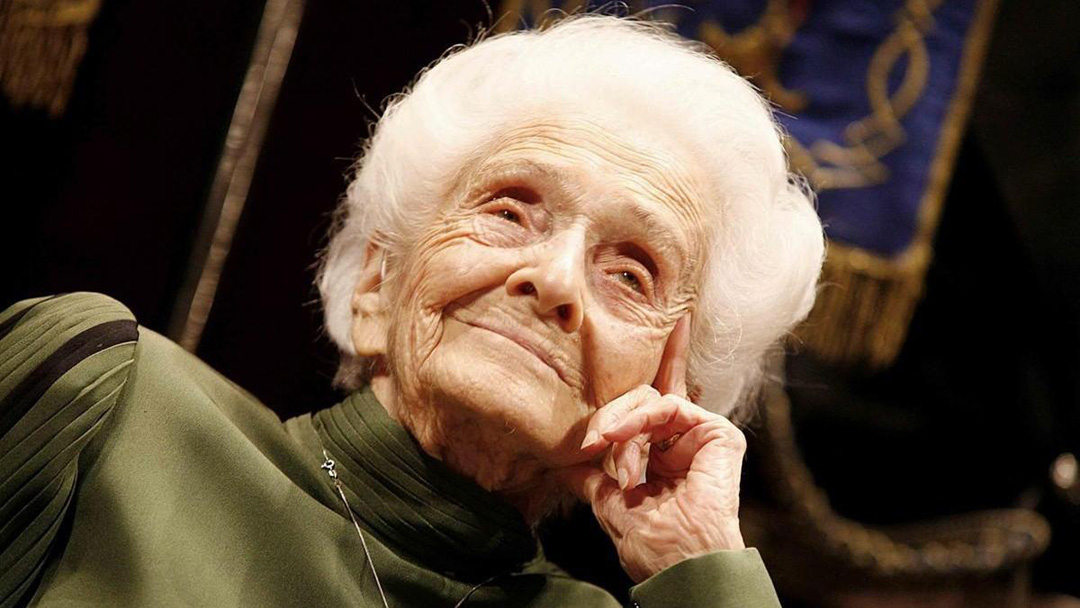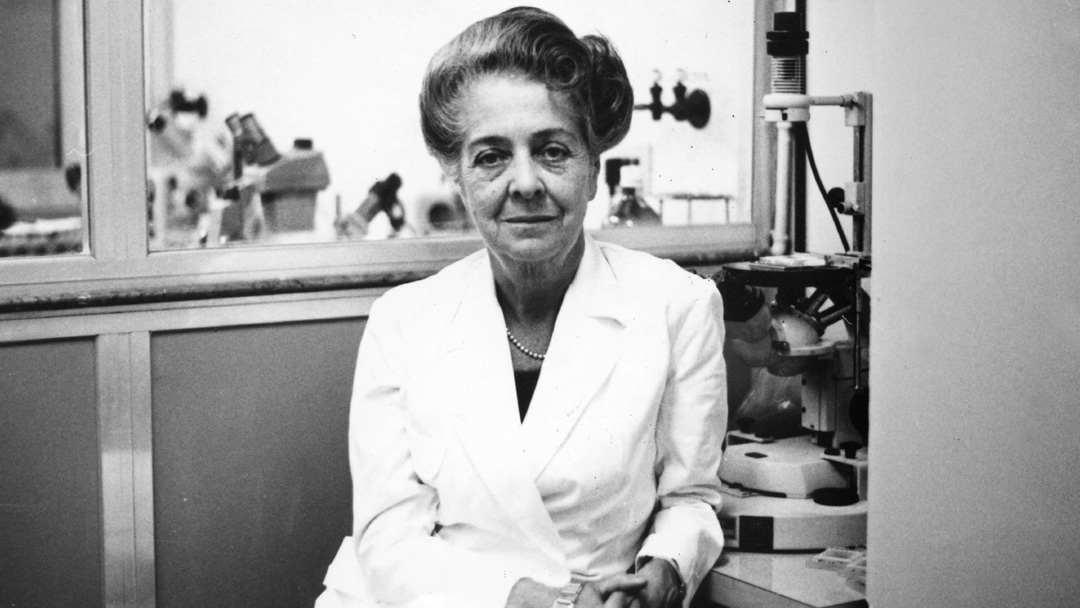Rita Levi-Montalcini
L’artista della scienza
Ultimogenita della famiglia Levi-Montalcini (Torino, 22.04.1909 – Roma, 30.12.2012) gemella eterozigota di Paola. Secondo la credenza per cui il primo dei gemelli a venire al mondo, è il secondo ad essere concepito, affermava con una certa fierezza di essere la più giovane tra i quattro figli dell’ingegner Adamo Levi e di Adele Montalcini, valida pittrice.
Il 24 luglio del 1936, insieme alla cugina Eugenia, compagna di tutto il percorso universitario, si laurea in medicina e chirurgia con 110 e lode e dignità di stampa. La cronologia della sua scoperta, raccontata minuziosamente nelle lettere alla madre e alla gemella Paola, è contenuta nel libro “Cantico di una vita”.
Nel 1986, insieme al biochimico Stanley Cohen, è insignita del Premio Nobel in Fisiologia o Medicina con la motivazione: “La scoperta dell’NGF (…) è un esempio affascinante di come un osservatore acuto possa estrarre ipotesi valide da un apparente caos….” e nel 2001 il Presidente Carlo Azeglio Ciampi la nomina Senatrice a vita “per aver illustrato la Patria con altissimi meriti nel campo scientifico e sociale”.
Unica donna italiana, fino a oggi, ad aver conseguito il premio Nobel in materie scientifiche, è per molte ragazze e donne un esempio da seguire: di lei ammirano e ricordano la determinazione, la disponibilità, la limpidezza e l’acutezza del ragionamento, la raffinatezza dei modi e l’innata eleganza. A lei «piccola signora dalla volontà indomita e dal piglio di principessa», come la definì Primo Levi, Il mondo intero ha tributato il suo omaggio.
Rita Levi-Montalcini
The artist of science
Last child of the Levi-Montalcini family (Turin, 04.22.1909 – Rome, 12.30.2012) heterozygous twin of Paola. According to the belief that the first of the twins to come into the world is the second to be conceived, she affirmed with a certain pride that she was the youngest of the four children of the engineer Adamo Levi and Adele Montalcini, a good painter..
On July 24, 1936, together with her cousin Eugenia, companion throughout the university course, she graduated in medicine and surgery with 110 cum laude and dignity of press. The chronology of her discovery, detailed in the letters to her mother and twin Paola, is contained in the book “Song of a life”.
In 1986, together with the biochemist Stanley Cohen, she was awarded the Nobel Prize in Physiology or Medicine with the motivation: “The discovery of NGF (…) is a fascinating example of how an acute observer can extract valid hypotheses from an apparent chaos…. ” and in 2001 President Carlo Azeglio Ciampi appointed her Senator for life “for having illustrated the country with very high merits in the scientific and social fields”.
The only Italian woman, up to now, to have been awarded the Nobel Prize in scientific subjects, she is an example for many girls and women to follow: they admire and remember her determination, availability, clarity and acuity of reasoning, refinement of manners and innate elegance. The whole world has paid its homage to her “little lady with an indomitable will and the air of a princess”, as Primo Levi called her.


